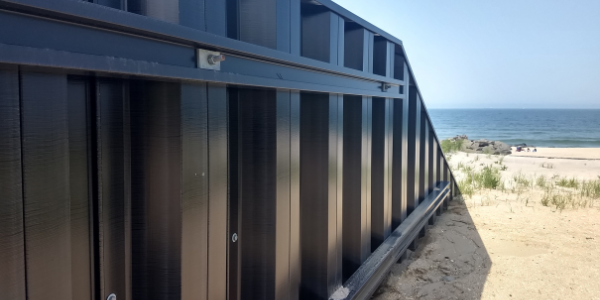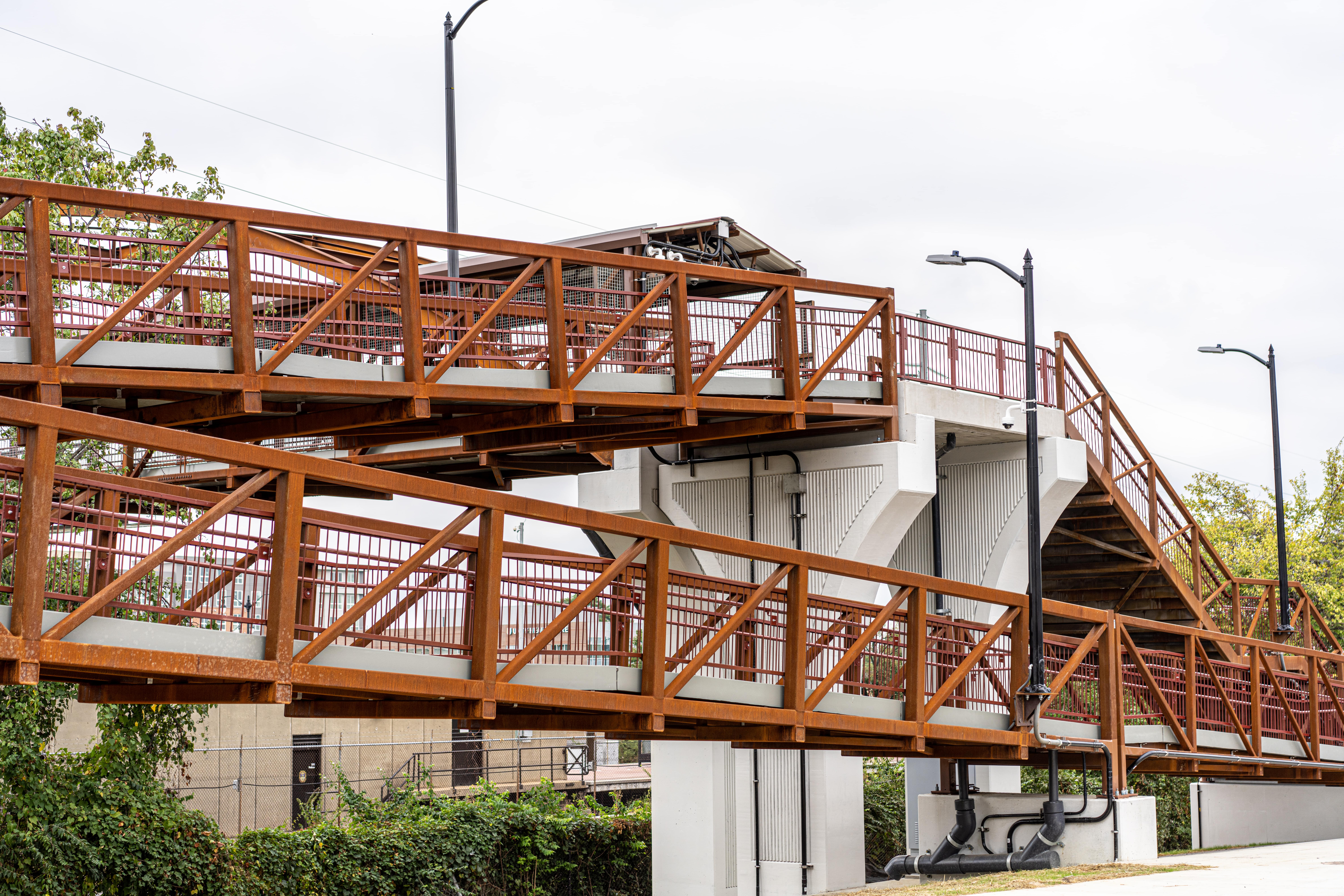
Of all the water on Earth, 97% of it is salt water. Saltwater ecosystems provide some of our most life-sustaining environmental benefits, including sequestering carbon at 50% higher rates than tropical forests and providing more than 50% of Earth’s oxygen.
But our oceans are both under threat from and present a threat to humanity. The environmental changes humans have wrought on the planet have had a devastating impact on the ocean’s natural protections like coral reefs. The oceans, in turn, batter manmade structures on coastlines during major weather events like hurricanes.
And salt water does not play nice with the most common manmade building materials: concrete with steel rebar. Salt corrodes steel, and rust then cracks the concrete, weakening structures and increasing risk. When precious utilities are so near the corrosive conditions of the sea, concrete and steel rebar simply won’t do.
Fiber Reinforced Polymer (FRP) is the solution both humans and our oceans need for reliable, lasting seaside bulkheads that protect everything from boardwalks to water treatment centers.
Salt Water and Material Choice
As environmental changes continue to occur and sea levels continue to rise, local, state and federal jurisdictions redraw the flood zone maps, mandating that different locales raise seawalls and bulkheads. This presents a problem for traditional materials. It is difficult to add height to an existing concrete barrier, as the corroded rebar inside these structures can make adding weight unsafe.
Concrete with steel rebar is a suitable choice for many environments, but it cannot stand up to the stresses of the high-salinity seaside. Saltwater degrades steel five times faster than fresh water, and humid, salty air speeds this rate up to 10 times faster. Few utilities, cities and states have the budget to replace these materials every few years.
But neither can utilities, cities and states simply avoid highly saline environments. People populate these areas, and essential services like power and water treatment need to function as expected without the damaging effects of salt water.
Protecting utilities by keeping the sea where it belongs requires the right material partner. Along with other innovations, like mixing the concrete with salt water instead of fresh, Fiber Reinforced Polymer (FRP) is extremely durable in high-salt conditions.
StormStrong® FRP Brings Resiliency
Because it’s naturally non-corrosive, FRP is not subject to the rusting and degradation of steel. And saltwater concrete with FRP rebar is just one option; Creative Composites Group (CCG) also offers a full line of sheet piling and pipe piling FRP products as part of the StormStrong line.
These products have a proven record of resilient storm-hardening. For example, the 2.5-mile Long Beach Boardwalk in New York was rebuilt with over 6,600 pieces of SuperLoc® 1580 sheet pile after the damage of Hurricane Sandy in 2012. Old Bridge Municipal Utility Authority in Laurence Harbor, NJ, also selected StormStrong products to rebuild its bulkheads after Sandy and protect the area from such devastation in the future.
FRP has a significantly longer service life than traditional bulkhead materials like vinyl, steel, concrete and wood, and choosing StormStrong products means investing in the best-tested FRP on the market. CCG provides engineers with immense testing information and documentation to aid in design efforts.
And SuperLoc sheet pile products come in 1432 (most thick), 1610, 1580, and 1560 (least thick) profiles to meet different bulkhead builds and wall characteristics, such as exposure height, surcharge loads, tie-back conditions and more. CCG experts are also on-hand to help engineers select the best size for the maximum moment required for the bulkhead.
With 30 of 50 states in America touching the sea, utilities serving these areas need to keep themselves safe from the ocean’s corrosion and fury. StormStrong products like SuperLoc offer decades of protection without corrosion, hardening the grid and keeping customers happy. Contact CCG today to discuss your challenges with traditional bulkhead materials and how FRP can solve them.
